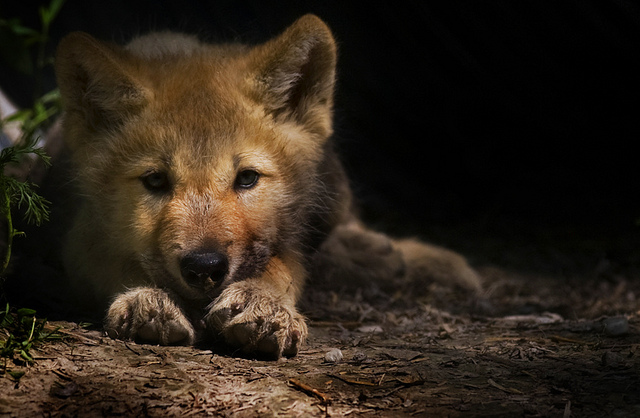The absence of pups could signal the end for the iconic wolf population.

Jeremy Weber
Aerial surveys supported the implications of that silent summer—the wolves of Isle Royale did not produce pups. As the wolf population has declined to eight individuals, all closely related, their ability to survive and reproduce has declined as well in a phenomenon known as inbreeding depression. Wild wolves avoid mating with close relatives, the only option left on Isle Royale. If close relatives choose to mate, the chances that their offspring will inherit undesirable recessive traits increases, resulting in wolf pups that could be deformed or unable to produce viable offspring.
Physical abnormalities had already been witnessed in the wolves. A 2009 paper in Biological Conservation reported that 58 percent of the Isle Royale wolves examined had congenital spinal deformities. Although the defects weren’t crippling, they were widespread, showing up in 12 recently necropsied wolves. Other defects have been observed as well.
The situation has left conservation biologists to ponder whether or not they should intervene. One side believes in letting nature runs its course—even if it means letting the wolves go extinct—and then bringing fresh wolves to the island to control the bountiful moose population. The other side believes that intervention is necessary, and wild wolves and new genetic material should be imported to rescue the population, as was done with the Florida panther.
A genetic rescue would not only be for the sake of the study of these wolves but for the island as well. Before the first arrival of wolves on Isle Royale, the moose population exploded in the absence of a predator. The browsing of such a large number of moose took its toll on the forest. When a canine parvovirus decimated the wolf population in the 1980s, the researchers were able to connect the number of wolves to the health of the trees, in one of the first studies to show evidence of terrestrial trophic cascades. Trees grew better when wolves were greater in number since they kept the moose population in check.
The study has become the world’s longest running on predator-prey dynamics and is one of science’s most famous data sets. In providing a bevy of data, Isle Royale has also equipped researchers with a solution to the problem now at hand. When a lone male wolf crossed an ice bridge to the island in 1997, he not only brought new genetic material—he took over as the new breeder. DNA analysis used to identify individual wolves revealed the presence of a new Y chromosome in the population. Eventually the first Y chromosome marker type disappeared and all that was left was the second type, which could be traced back to one wolf—the newcomer, known as “old gray guy.”
Old gray guy genetically took over Isle Royale by the time he died; his Y chromosome is now the only one present in the population. One of the lead researchers in the Isle Royale study credits old gray guy with saving the population for another 10 to 15 years. The odds are slim that this type of event will happen again, though. While ice bridges like the one old gray guy crossed over on used to occur every two to three winters, they now only happen once a decade as a result of climate change. Unless the wolves of Isle Royale have another surprise in store for researchers, their fate now depends on the decision to intervene or do nothing.
Science, 2013. DOI: 10.1126/science.340.6135.919 (About DOIs).
source

No comments:
Post a Comment